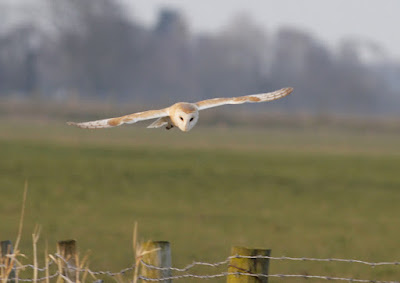I was tempted to do a spot of ringing at Oakenclough but it was just a little too breezy from the north and the forecast was less than perfect with “showers” which might be snowy. In any case it would be a solo effort and a bit of a chore while Andy is still sunning himself in Morocco.
So I did a food drop only while noting a single Lesser Redpoll and still good numbers of Chaffinch and Goldfinch about the feeders and a couple of Siskin “over”.
Goldfinch
Lesser Redpoll
I drove back to the coast via Garstang and landed up at Cockerham and then Conder Green. The pool and creeks hold few bird surprises now as we wait for spring to arrive with the early migrants. Around the pool and in the tidal creeks – a Reed Bunting in song, 2 Little Grebe, 45 Wigeon, 18 Shelduck, 8 Oystercatcher, 2 Tufted Duck, 40 Curlew, 1 Common Sandpiper, 1 Little Egret, 1 Grey Heron, 2 Pied Wagtail and a handful of both Chaffinch and Goldfinch. Both Redshank and Teal numbers may be down with respective scores of 28 and 30.
Turned 0900 and in broad daylight arrived yet another Barn Owl, probably the regular one which is seen almost daily now and has a winter roost nearby. The owl was busily hunting both the inner and outer marshes and while I didn’t see it catch any prey it was out of sight for minutes at a time. After a while it flew back towards its daytime hideaway.
Barn Owl
At Braides there was a Buzzard searching the rough grass, on the flood 30 or more Lapwings plus a couple of Skylarks on fence posts. Skylarks were in song today with a number of Lapwings showing territorial behaviour through snatches of aerial display.
There was nothing doing through Cockerham/Pilling and just a couple of Linnets at Wrampool with no sign of any Stonechats.
It was now turned 1030 and as I drove through Pilling village a Barn Owl flew directly over the car and out of sight into a building complex on the left. In reading local web sites and blogs in the past week or two it is remarkable but also worrying how many Barn Owls are being seen during daylight hours. Good that there seem to be numbers around but not good that they are all obviously having difficulty in surviving these lean times by spending inordinate amounts of time searching for food. The birds are also exposing themselves to the extra risks posed by dodging busier daytime traffic.
Barn Owl
I was on my way across the mosses of Pilling and Out Rawcliffe. I stopped to watch a gang of Roe Deer saunter into a small copse and simply melt into the trees and out of sight. Roe Deer are smaller than many people might imagine – look at their size in comparison with the bales of fodder.
Roe Deer
I found a good selection birds feeding in the stubble fields of the mossland – 80 Fieldfare, 80 Linnet, 40+ Corn Bunting, 21 Yellowhammer, 20 Chaffinch, 10 Reed Bunting, 3 Song Thrush and 1 Grey Heron. Accompanying raptors were noted as 2 Buzzard and 2 Kestrel.
Yellowhammer
As on the coast an hour or two before both Skylarks and Lapwings were in display mode with pairs of Oystercatchers noted at three or more locations.
There’s snow forecast for the weekend. But come rain or shine Another Bird Blog will hopefully bring, news, views and birds. Log in again soon.
Linking today to Eileen's Saturday and to Run A Round Ranch.
Linking today to Eileen's Saturday and to Run A Round Ranch.























































.jpeg)











.jpg)












